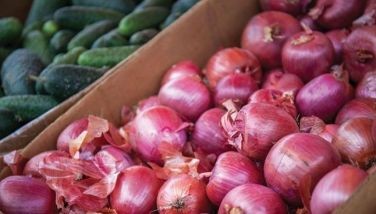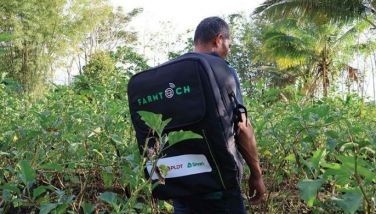Sugar shortage hocus-pocus

A discussion on sugar, particularly the processed versions, almost always elicits in me mixed feelings of its actual beneficial role in modern life given the many unhealthy warnings linking it to obesity, diabetes, heart disease, and even cancer. Yet, at this point in time, sugar craving continues to dominate human lives.
Global sugar demand has continued to rise over the last decade, corresponding to the increase in the percentage of sugar consumption in modern daily diets. Today, sugar is seen as the world’s third most valuable crop, next only to cereals and rice. Sugar cane continues to be the leading source of sugar for the world, with Brazil and India as the biggest producers to date.
Until the mid-1970s, the Philippines was among the top suppliers of processed sugar in the world market, but a continued regime of protectionism has blunted competitiveness so much so that the price of locally produced sugar is now about double that of the world market.
Local sugar barons or hacienderos wield strong political influence to maintain the existing system of sugar production, as specified by law, where planters and millers share the final output on a 60-40 basis. This sharing has been criticized as the main reason why our milling capability has become so antiquated, ultimately influencing high production costs.
The current sugar quedan system, together with the government’s role of fixing suggested retail prices (SRP), further reinforce high local sugar prices. The complicity is appalling when you realize that you have a system that encourages high production cost of sugar on which an SRP decision is based.
Flawed action
When the SRP of white sugar was at P50 a kilo, international prices were at half its price. Even with higher fertilizer prices today, world market prices continue to be much lower than the current Philippine SRP.
Thus, if the government raises the SRP to P90 a kilo as per the latest news, some hocus-pocus is apparently brewing where only our consumers will be burdened most. Benefiting most from the higher SRP will be sugar producers and, and for a limited volume, importers.
Flawed decision-making and actions dominate the whole process that has led to the local sugar shortage and the doubling of prices.
The Sugar Regulatory Administration (SRA) had foreseen the effect of Typhoon Odette last December as a reason for possible shortages in local sugar harvests. The sugar body decided, as it did in the past, during times when sugar harvests were seen to be affected by natural disasters, to allow a corresponding amount of importation to keep prices within the existing ranges.
This time around though, two sugar planters’ groups, in a surprise move, filed petitions pleading the courts to issue rulings to temporarily stop the additional sugar importation. Clearly, this move disregarded the logic behind the SRA’s importation order, and the adverse effect of supply shortages and price volatility.
Sugar producers had argued in court that any sugar importation would weaken sugar farmers’ incomes at a time when fertilizer prices were going up as a result of Russia’s invasion of Ukraine. The courts, in turn, favoring the interests of sugar planters over the nation, issued temporary rulings delaying the much-needed imports.
Clearly, in the seven long months after Typhoon Odette struck, the SRA failed to come up with effective responses to mitigate the possibility of shortages and its consequential effect on pricing. Over the longer term, the SRA had disregarded warning signs of marked year-on-year reductions of raw and refined sugar stockpile levels, which could have provided some form of buffer against supply shortages.
What is more discordant in the unfolding response of our government agencies is the decision to almost double the SRP of sugar when the reasons for the supply shortages are going to be temporary.
Once the imported shipments of sugar arrive, a supply-demand balance should automatically follow, which should drive prices back to the prevailing levels.
The doubling of fertilizer prices, which should also be seen as temporary effects of the Ukraine war, does not justify an almost doubling in the SRP price of local sugar. Other sugarcane producing countries are not factoring this in, which reflects on the stable pricing of sugar in the world market.
Even in the food price index of the Food and Agriculture Organization, sugar is not considered as adversely affecting global food inflation levels. World stockpile levels continue to be healthy, and production by the top 10 countries promise harvests that will not screw up global exports.
Bringing SRP levels to P90 per kilo goes against market trends and reflects an erroneous and unwarranted government intervention based on a wrong prognosis of market forces affecting local sugar supply. The government should not pass on the effects of its mismanagement on consumers.
High sugar prices
Our high sugar prices have been a constant complaint by industries that consume huge amounts for sugar for their products. This has prompted many of them that look at expanding their business outside the Philippines by setting up factories in countries where sugar prices are attuned to global levels.
For those that decide to continue doing business in the country, the only recourse to keep up with high domestic sugar prices is to pass this on to the Filipino consumer, and pray that demand will not weaken to a point where continuing to manufacture sugar-based products will become uneconomical.
Then again, Filipinos turning against sweets and sweetened foods may be a good thing, especially if we heed what our doctors say.
Facebook and Twitter
We are actively using two social networking websites to reach out more often and even interact with and engage our readers, friends and colleagues in the various areas of interest that I tackle in my column. Please like us on www.facebook.com/ReyGamboa and follow us on www.twitter.com/ReyGamboa.
Should you wish to share any insights, write me at Link Edge, 25th Floor, 139 Corporate Center, Valero Street, Salcedo Village, 1227 Makati City. Or e-mail me at [email protected]. For a compilation of previous articles, visit www.BizlinksPhilippines.net.
- Latest
- Trending




























